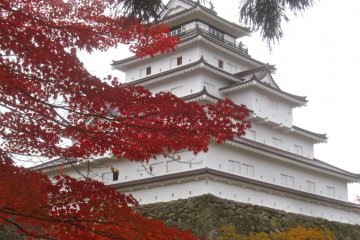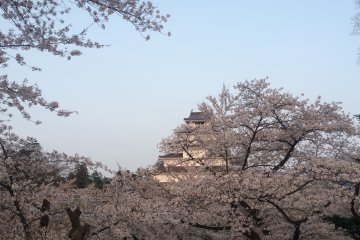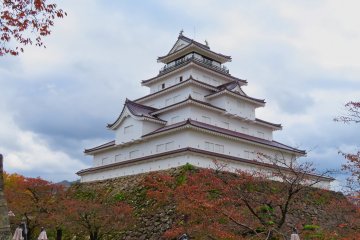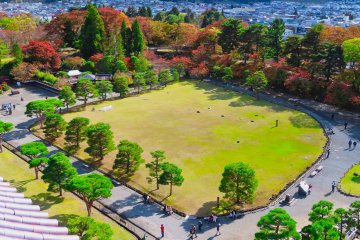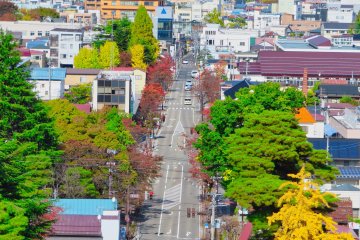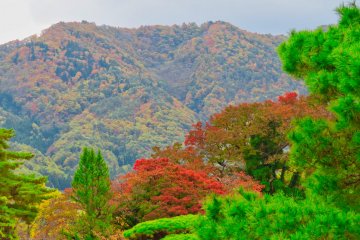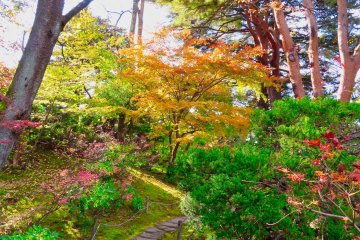The diverse beauty of Fukushima prefecture makes it a must stop on your travels throughout Japan. Majestic mountain roads, colorful lakes, Onsen around every corner, an impressive limestone cave, and numerous historical sites are awaiting your exploration. You will also enjoy their fresh fruits, and vegetables along with some very unique cuisine. The metro area of Fukushima city produces over 20 percent of all peaches grown in Japan.
Due to the 2011 disaster, tourists have avoided this area out of fear. What many do not realize is that only 2.7% of Japan’s third largest prefecture was directly affected by the Tsunami and nuclear power plant meltdown.
My step-son Hiro and I embarked on an adventure to explore Fukushima Prefecture. Our Day-One itinerary included a trip to Aizu-Wakamatsu to see Tsurugajo Castle and Oyakuen Gardens.
Originally started in 1384, construction of Tsurugajo castle’s seven stories was finished in 1593. During its long history, it was destroyed and rebuilt as a result of wars and earthquakes. Today, it is a replica of the 1639 five story structure and a national historical site. Over its history there were seven ruling castle lords. One of the most notable is the famous feudal lord Gamo Ujisato who was also a tea master and head of the Rikyu style of tea-ceremony. You can participate in a tea ceremony on the castle grounds. For history buffs, enjoy a self-guided tour inside the castle. (410 yen entrance fee). Climb all the way to the fifth story observation deck for a grand view of Aizu-Wakamatsu and its surrounding area.
After that, take a fifteen-minute walk from the castle to Oyakuen Gardens.
When you are about halfway there you will see Kamishiroya restaurant. Make sure to stop in and enjoy some of their special soba, a local favorite.
Oyakuen is a compact garden with nice walking trails around a large pond with great photo shooting spots. (entrance fee is 330 yen)
Oyakuen means Medicinal Garden. In the 17th century, the Aziu lord began planting herbs to protect the citizens from outbreaks of severe diseases. This nationally designated scenic spot still produces these important herbs and you can enjoy some of their special herb teas in the garden.
Even with the changes from Covid you can attend a 5-person history lesson in one of the buildings situated on the pond.
Not far from the gardens is the Aizu Samurai residence, where you can learn how the Samurai lived back in the Edo Period.
Aizu -Wakamatsu has many other interesting attractions, so be sure to check the information center near the castle.



